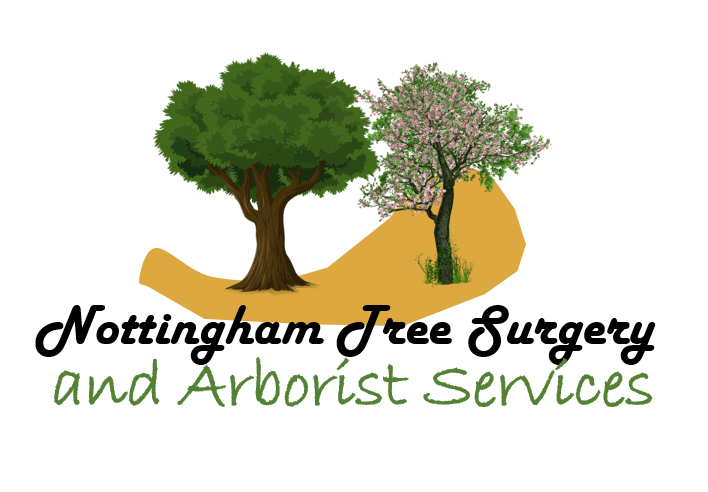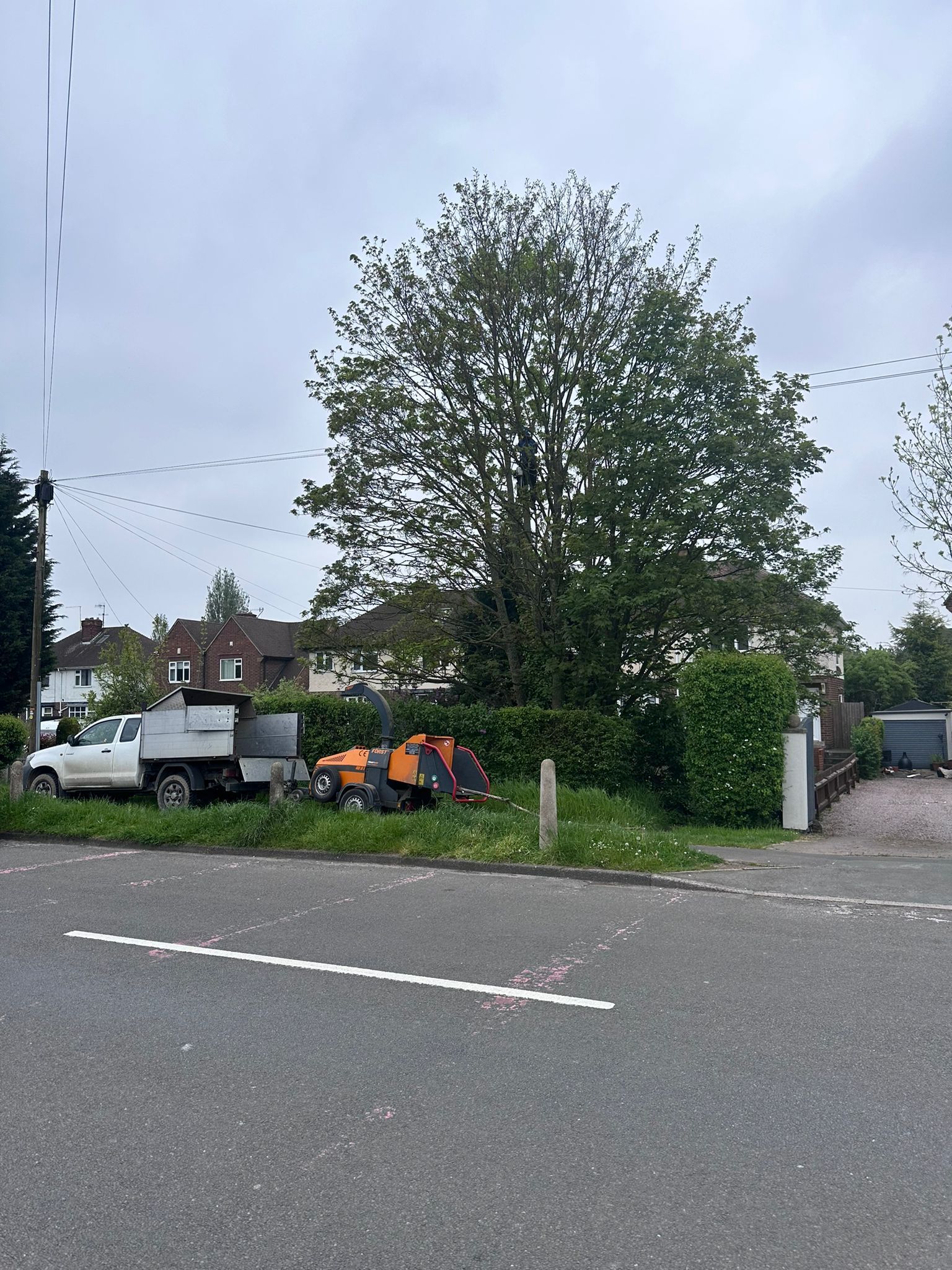Your Guide To Tree Pruning At The Correct Time Of Year
Pruning trees is more than just tidying up your garden—it's about keeping your trees healthy, safe, and looking their best. If you live in Nottingham, knowing when to prune your trees can make a huge difference in their growth and overall condition. You’ve probably noticed trees in your neighbourhood that look overgrown, with branches starting to touch roofs or get tangled in power lines. This can lead to safety concerns or even damage during a storm.
But did you know that the timing of pruning is just as important as how it’s done? Pruning at the wrong time of year can harm your tree or slow down its growth. That’s why we’ve put together this guide to help you understand the best times for tree pruning in Nottingham and the UK and how it benefits your trees.
Why is Tree Pruning Necessary?
1. Maintaining Tree Health
One of the main reasons to prune your trees is to maintain their health. Over time, branches can become diseased, damaged, or dead. These weakened branches can affect the tree’s overall structure and health, leading to decay and further damage. Regular pruning helps remove these problematic branches, allowing the tree to focus its energy on healthy growth.
- Removing deadwood prevents the spread of disease to other parts of the tree.
- Pruning promotes better airflow, reducing the risk of fungal infections.
Without regular pruning, trees can develop structural issues like co-dominant stems, which can split during strong winds. Especially in Nottingham, where storms can cause havoc, it’s essential to keep your trees in check. If you are looking for any kind of tree services in Nottingham, then check out our main website for more help.
2. Ensuring Safety
Safety is a top priority when it comes to tree pruning. Overgrown branches can pose a risk, especially when they’re close to buildings, roads, or power lines. In an urban environment like Nottingham, this can be a real hazard.
- Falling branches can cause damage to property or even injury.
- Pruning reduces the risk of storm damage, preventing accidents.
For homeowners, keeping trees safe through pruning reduces the chances of costly repairs after a storm or heavy wind. A tree that’s left unpruned can become unstable, and once large branches fall, the damage is often extensive.
3. Enhancing Aesthetics
Pruning also keeps your trees looking neat and tidy. A well-maintained tree can transform the look of your garden or property. Whether it’s shaping a tree to create symmetry or simply removing unsightly branches, pruning helps maintain the tree's visual appeal.
- Pruned trees can complement landscape design by maintaining their shape and size.
- Encourages fuller, healthier growth, resulting in more attractive foliage.
When you work with professionals like Nottingham Tree Surgery and Arborist Services, you’ll notice the difference that expert pruning can make.
Understanding Seasonal Factors for Pruning
Knowing when to prune your trees is critical, and it varies depending on the season. Each time of year offers different benefits and challenges for pruning.
1. Winter Pruning
(November to March) Winter is often considered the best time to prune most deciduous trees in the UK. This is because trees are in their dormant phase, and pruning during this time can help ensure strong growth in the spring.
- Benefits of Dormancy: When trees are dormant, they lose their leaves, making it easier to see their structure. This allows for more precise pruning without the risk of disrupting the tree’s active growth.
- Reduces Stress on Trees: Winter pruning is less stressful for trees because there’s no active growth. This means the tree has time to heal before the growing season starts.
During Nottingham’s colder months, pruning is not only more manageable, but it’s also a time when pests and diseases are less active. This reduces the risk of infections entering the tree through fresh cuts. The winter months also allow you to shape the tree more effectively, setting it up for strong and healthy growth come spring.
2. Spring Pruning (April to Early June)
Pruning in early spring can be beneficial for removing dead or damaged branches. However, heavy pruning should generally be avoided during this time, as trees are just starting to grow.
- Light Pruning Only: In spring, trees begin to send out new shoots and leaves, which are crucial for their health. Heavy pruning can disrupt this growth and weaken the tree.
- Focus on Dead or Diseased Branches: Light pruning can be done to remove any remaining deadwood or diseased parts from the winter. This helps prepare the tree for a season of strong growth.
Spring is a time of renewal for trees, and while it’s tempting to do a major prune, you’ll want to hold back to avoid shocking the tree. In Nottingham, the mild spring temperatures provide a good opportunity for minor maintenance work rather than heavy trimming.
3. Summer Pruning (Late June to August)
Summer pruning is ideal for controlling the size and shape of large, mature trees. With the full foliage on display, summer pruning allows you to see the tree’s natural form and adjust accordingly.
- Ideal for Shape Control: Summer is perfect for maintaining the size and shape of trees. If you notice any branches growing out of proportion or interfering with nearby structures, this is the time to trim them back.
- Prevents Overgrowth: For trees that grow quickly, a summer prune can help control excessive growth and maintain balance.
Nottingham’s relatively mild summers mean that pruning during this time is usually safe. However, it’s important not to prune too late in the season, as trees need time to recover before winter.
4. Autumn Pruning (September to October)
Autumn is not generally the best time for heavy pruning, but there are exceptions. The cooler, wetter conditions make trees more susceptible to disease.
- Focus on Minor Pruning: If necessary, focus on removing dead or damaged branches rather than significant cuts.
- Prepare for Winter: Light pruning in autumn can help trees prepare for winter by removing weak or damaged limbs that could break in winter storms.
It’s best to leave major pruning jobs until winter when trees are fully dormant. In Nottingham, autumn brings damp conditions that could make pruning wounds more likely to get infected. Keep it light, and leave bigger jobs until later.
Different Tree Types and Their Pruning Needs
Different trees require different care, and knowing the specific needs of each type helps ensure they grow strong and healthy.
1. Deciduous Trees
Deciduous trees, such as oaks, ashes, and beeches, lose their leaves in autumn, making them ideal candidates for winter pruning.
- Best Time to Prune: Late winter, just before the tree starts to grow again.
- Common Deciduous Trees in Nottingham: Oak, Beech, and Ash are all popular species in the area, and each benefits from a careful prune during dormancy.
By pruning in winter, you ensure that the tree can focus its energy on producing new shoots in spring, leading to a fuller, healthier canopy
.
2. Evergreen Trees
Evergreens, such as Scots Pine and other conifers, retain their leaves year-round, but they also need regular maintenance.
- Best Time to Prune: Late winter to early spring is usually ideal, but you can also do some light pruning in summer to control growth.
- Considerations for Evergreens: Be cautious not to over-prune evergreens, as they don’t regenerate foliage as quickly as deciduous trees.
Evergreens in Nottingham gardens are often prized for their year-round colour and privacy screening. Regular, controlled pruning helps them stay lush and full.
3. Fruit Trees
Fruit trees, such as apple and pear trees, are a common sight in Nottingham gardens. These trees need both winter and summer pruning.
- Winter Pruning: Focus on removing any dead or damaged wood, as well as improving the structure of the tree to allow for better fruit production.
- Summer Pruning: Light pruning in summer can help control growth and improve the quality of the fruit.
For homeowners who want to enjoy healthy fruit trees, regular pruning is essential to maximise fruit production and ensure a bountiful harvest.
Regional Considerations for Nottingham
The climate in Nottingham plays a big role in when and how you should prune your trees.
1. Impact of Weather Conditions
Nottingham experiences moderate rainfall and seasonal temperature variations, which affect tree pruning. Winter months are usually cold but not extreme, making them ideal for pruning when trees are dormant. The wet conditions in autumn and spring, however, mean you need to be cautious when pruning to avoid introducing diseases to fresh cuts.
- Rainfall: Heavy rainfall can increase the risk of disease if trees are pruned during wet periods.
- Temperature: Mild winters make it safe for dormant-season pruning, while moderate summer temperatures allow for shape maintenance.
2. Local Tree Varieties
Nottingham’s local tree varieties, such as beech, oak, and Scots pine, each have unique pruning needs. Understanding these helps ensure proper care.
- Beech and Oak Trees: Prune in winter to maintain strong structural integrity.
- Scots Pine: Evergreen pines need minimal pruning, with a focus on light trimming in late winter.
By considering both the local climate and tree varieties, Nottingham homeowners can ensure their trees stay healthy and safe throughout the year.
Signs Your Tree Needs Pruning
Not sure when it’s time to prune? Look out for these signs that indicate your tree could benefit from a trim:
- Overgrown Branches: Branches extending over roofs, power lines, or into the street need pruning for safety.
- Dead or Diseased Branches: If you spot deadwood or signs of disease like fungus, it’s time to prune.
- Crossing Branches: Branches that rub against each other can cause wounds that make trees susceptible to disease.
Addressing these issues early helps maintain the health and safety of your trees.
Professional Tree Pruning vs. DIY
While some homeowners may be tempted to prune their trees themselves, there are several benefits to hiring a professional.
1. The Benefits of Professional Arborists
- Safety First: Pruning can be dangerous, especially for large trees or those near power lines. Professionals have the experience and equipment to do the job safely.
- Expertise: A trained arborist knows the right techniques and timing for pruning, ensuring your tree’s health and growth.
- Local Knowledge: A local company like Nottingham Tree Surgery and Arborist Services understands the specific needs of trees in Nottingham’s climate.
2. When to DIY
While professionals should handle large or complicated pruning jobs, smaller, low-risk tasks such as removing a few dead branches can be done by homeowners with the right tools.
Pruning Regulations in Nottingham
If your tree is protected by a Tree Preservation Order (TPO), you’ll need permission before pruning. Failing to get approval can lead to hefty fines.
- What is a TPO?: A TPO protects specific trees or woodlands in Nottingham, meaning you can’t prune or fell them without council permission.
- How to Get Approval: If you suspect your tree is under a TPO, contact a professional tree service to help navigate the application process.
Hiring a tree care service ensures you stay compliant with local regulations and avoid fines.
Final Thoughts And Why Timing Matters
The timing of tree pruning can make all the difference. Pruning at the right time ensures your tree remains healthy, safe, and visually appealing. In Nottingham, where seasonal weather conditions play a significant role, knowing when to prune can help you get the best results.
For professional advice and pruning services tailored to your trees’ needs, reach out to Nottingham Tree Surgery and Arborist Services. Our team understands the unique challenges of Nottingham’s climate and tree varieties and can provide expert care to keep your trees thriving.
Call Now To Arrange A FREE Tree Pruning Quote
Telephone: 0115-824-3203



